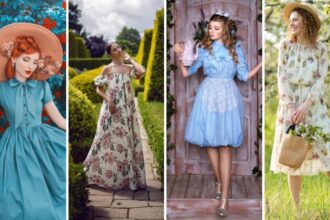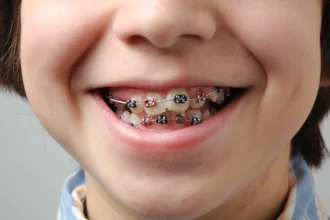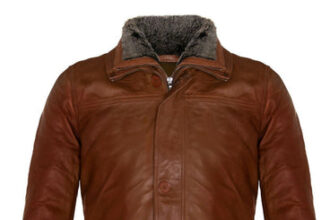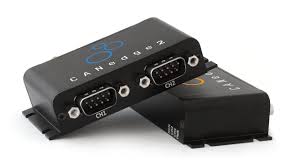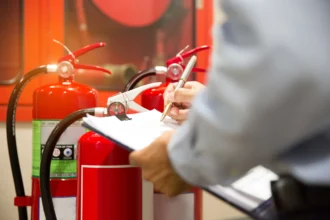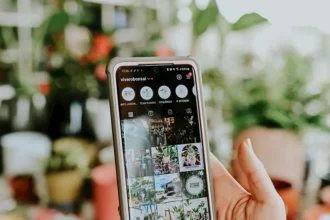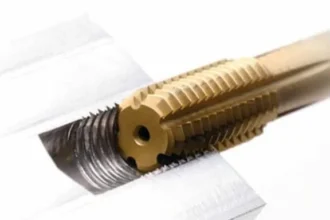Introduction to Nahttypen
When diving into the world of sewing, understanding different seam types is crucial. Each nahttyp has its own unique characteristics and applications, shaping the way your fabric comes together. Whether you’re a seasoned seamstress or just starting out, knowing how to choose and apply various seams can elevate your projects significantly. From the basic plain seam to more decorative options like zigzag stitches, this guide will explore the myriad of possibilities that await you in your crafting journey. Get ready to unlock the secrets behind each stitch and discover how they can enhance both functionality and aesthetics in your creations!
Basic Seam Types:
When it comes to sewing, mastering basic seam types is essential. Each seam serves a unique purpose and can greatly impact the final look of your project.
The plain seam is the most straightforward option. It simply joins two pieces of fabric together, making it perfect for general use in garments and home décor projects.
Next up is the French seam, known for its clean finish. This type encloses raw edges within itself, making it ideal for delicate fabrics like silk or lightweight cotton.
Then there’s the flat-felled seam, which adds strength and durability to seams. Commonly found in denim and workwear, this technique provides a polished appearance while preventing fraying.
Understanding these basics allows you to choose the right technique based on your fabric choice and project requirements.
A. Plain Seam
The plain seam is one of the most fundamental types of seams in sewing. It’s simple yet effective, making it a go-to choice for many projects.
To create a plain seam, two pieces of fabric are aligned with their right sides facing each other. Sew along the edge to join them together. This method provides a clean finish and allows for easy adjustments later on.
One common application is in garment construction, where it connects different parts like sleeves to bodices or pant legs. The versatility of the plain seam means you can find it not just in clothing but also in home textiles like curtains and tablecloths.
While it may seem basic, mastering the plain seam opens doors to more complex techniques. It’s an essential building block that every sewist should know.
B. French Seam
The French seam is a favorite among sewists who appreciate clean finishes. It offers an elegant way to enclose raw edges, making it ideal for lightweight fabrics.
To create this type of seam, you start by sewing the fabric wrong sides together, then trim and fold before stitching again right sides together. This method not only hides the raw edges but also provides durability.
French seams are perfect for garments like blouses and delicate dresses where fraying might occur. They give a polished look that elevates any project while ensuring longevity.
This technique requires precision but rewards with refined results. For those aiming to master garment construction, incorporating French seams can enhance your skills significantly.
C. Flat-Felled Seam
The flat-felled seam is a favorite in both fashion and home décor. Its robust construction makes it ideal for high-stress areas like armholes and side seams.
This technique involves folding one layer of fabric over the other, enclosing raw edges. This not only provides strength but also creates a clean finish that looks polished.
Flat-felled seams are often found in denim garments, such as jeans. They add durability while preventing fraying over time. The seam’s neat appearance also enhances the garment’s aesthetic appeal.
Sewers appreciate this method because it can be executed on various types of fabric, from lightweight cotton to heavier materials. Its versatility ensures that it remains a staple in many sewing projects across different styles and applications.
Decorative Seam Types:
Decorative seam types add flair to any sewing project. They not only secure fabric but also enhance visual appeal.
The zigzag stitch is a favorite among crafters. It provides stretch and durability, making it ideal for knit fabrics. Plus, its wavy edge looks charming on hems or appliqués.
Then there’s the overlock stitch. This technique trims excess fabric while preventing fraying, resulting in clean edges that are both functional and stylish. It’s especially useful for finishing seams on lightweight materials.
Topstitching takes center stage with its bold appearance. By sewing a second row of stitches on the outside of garments, you can create striking contrasts or subtle details depending on thread choice and color.
Each decorative seam type serves a purpose beyond practicality; they transform ordinary pieces into extraordinary creations that showcase your unique style and craftsmanship.
A. Zigzag Stitch
The zigzag stitch is a versatile and essential seam type in sewing. It provides flexibility, making it ideal for knit fabrics. Unlike straight stitches, the zigzag allows fabric to stretch without breaking.
This stitch creates a series of interlocking loops that secure edges while preventing fraying. It’s particularly useful when finishing raw edges or working with stretchy materials like jersey or spandex.
Beyond functionality, the zigzag stitch can serve decorative purposes as well. By adjusting the width and length settings on your sewing machine, you can create unique patterns that enhance your project’s visual appeal.
It’s often used in applique work too. The stitched edges not only hold appliqué pieces securely but also add texture to the design. Whether you’re crafting clothing or home décor items, mastering the zigzag stitch opens up endless possibilities for creativity and innovation in your projects.
B. Overlock Stitch
The overlock stitch is a vital technique in garment construction. It provides a clean finish to the edges of fabric, preventing fraying. This stitch wraps around the raw edge, securing it neatly.
Often used on knit fabrics, the overlock stitch allows for flexibility and stretch. That means garments maintain their shape while providing comfort. It’s ideal for seams that need to endure movement without breaking.
Additionally, this type of stitching can vary in complexity. Some machines offer multiple threads, creating intricate designs or enhancing durability. Others may focus solely on speed and efficiency.
Using an overlock stitch not only elevates your sewing projects but also adds a professional touch. Whether you’re crafting casual wear or sophisticated outfits, this seam type stands out as both functional and stylish.
C. Topstitching
Topstitching is a versatile technique that adds both function and flair to your sewing projects. This method involves sewing a visible stitch on the outside of the fabric, usually along seams or hems.
Not only does it enhance durability, but it also creates an attractive finish. You can use contrasting thread for a bold look or match the fabric color for subtlety.
It works well on various materials, from denim to lightweight cottons. Consider using topstitching when making garments like jeans or bags where strength is essential.
Experiment with different stitch lengths and styles to achieve unique effects. A straight stitch provides a classic touch while decorative stitches can add personality to simple designs.
Incorporating topstitching into your work elevates its overall appearance and quality, making it an invaluable skill in any sewist’s toolkit.
Specialty Seam Types:
Specialty seam types offer unique solutions for specific sewing challenges. They enhance functionality and aesthetics in various projects.
A bound seam is one of the most versatile options. It involves encasing raw edges with fabric or bias tape, providing a neat finish while preventing fraying. This technique is perfect for garments that are frequently washed.
Bias binding adds an elegant touch to seams, allowing curves to be finished smoothly. It’s often used on necklines and armholes, blending seamlessly with the garment’s design.
Another notable specialty type is the flatlock seam. Commonly seen in activewear, it lays flat against the skin, offering comfort during movement. Additionally, it allows for creative color combinations when using contrasting threads.
Each of these specialized seams has its place in sewing projects, enhancing durability and visual appeal while addressing specific needs effectively.
A. Bound Seam
A bound seam is a technique that adds both durability and visual appeal to your projects. It involves encasing the raw edges of fabric with binding, which can be made from a variety of materials such as bias tape or ribbon.
This type of seam is particularly useful for finishing the edges of garments and home décor items. The neat finish prevents fraying while providing a polished look.
You’ll often see bound seams in unlined jackets, bags, and quilts. They are great for adding contrast or coordinating colors to enhance design elements.
When you want an elegant touch without sacrificing strength, consider using a bound seam. This method showcases creativity while ensuring longevity in your sewing endeavors.
B. Bias Binding
Bias binding is a versatile finishing technique used in sewing that adds both durability and style to fabric edges. It consists of strips of fabric cut on the bias, which means at a 45-degree angle to the grain. This unique angle allows for greater stretch and flexibility, making it ideal for curved edges.
When applied, bias binding can create clean seams while preventing fraying. It’s commonly found in quilting projects, garment hems, and even home decor items like table runners or pillowcases. The aesthetic appeal is undeniable; you can choose contrasting colors or patterns for added flair.
Applying bias binding requires some precision but yields beautiful results. Whether you’re enclosing raw edges or adding decorative flair, mastering this technique opens up new possibilities for your sewing projects. Each stitch reflects craftsmanship while enhancing the design with subtle elegance.
Common Applications for Each Nahttypen
Plain seams are the backbone of garment construction. They provide strength and stability in everyday clothing. You’ll find them in t-shirts and dresses alike.
French seams offer a clean finish for delicate fabrics. They’re perfect for sheer materials, ensuring that raw edges remain hidden. Think blouses or light summer skirts.
Flat-felled seams create durability, making them ideal for jeans and heavy-duty workwear. This seam type stands up to wear and tear while providing a polished look.
For decorative purposes, zigzag stitches add flair to hems or edges on casual items like tablecloths or handmade crafts.
Overlock stitches come into play with knit fabrics, preventing fraying while maintaining stretchability—ideal for activewear pieces!
Topstitching enhances visual appeal by adding texture along seams; it’s often used on jackets or bags where style meets functionality.
Each seam type has its place; understanding their uses can elevate your sewing projects significantly!
Choosing the Right Nahttyp
When selecting the right nahttyp, consider the fabric type and the intended use of your project. Each seam type has its strengths and weaknesses that can influence your choice. For garments requiring durability, a flat-felled seam or overlock stitch may be ideal. If you’re working with delicate fabrics, a French seam might provide both strength and an elegant finish.
Consider aesthetics as well; decorative seams like topstitching can elevate your design while providing functional benefits. Understanding how each nahttyp interacts with different materials will help ensure your project not only looks great but also stands the test of time.
Always keep in mind that practice makes perfect. Experimenting with various seams on scrap fabric allows you to gain confidence before tackling larger projects. As you become more familiar with these techniques, you’ll find it easier to choose the appropriate nahttyp for any sewing endeavor.
The key lies in balancing functionality and style—ensuring that every piece you create meets both practical needs and creative aspirations within the world of sewing!



